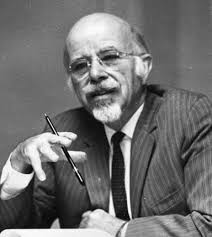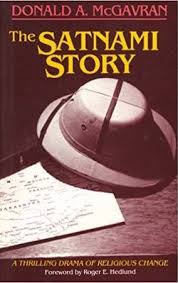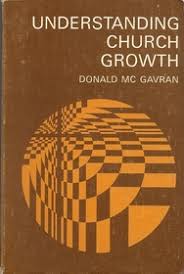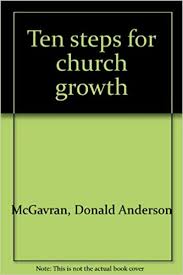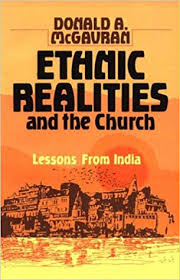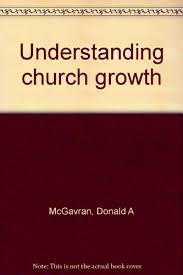THIS THREAD.
“God wants all people to believe on Jesus Christ, become members of his body, be filled with the Holy Spirit, and live in him. The Holy Spirit leads Christians everywhere in this direction. Anything less than this is not biblical.”
Donald McGavran.
Widely acclaimed
“God wants all people to believe on Jesus Christ, become members of his body, be filled with the Holy Spirit, and live in him. The Holy Spirit leads Christians everywhere in this direction. Anything less than this is not biblical.”
Donald McGavran.
Widely acclaimed
as “the Father of the Church Growth movement,” Donald A. McGavran occupies a distinctive place in the history of Christian missions and missiological reflection.
Today, most Ricebag Providers are following his theories, let us read how Donald infiltrated Bharath & what were his
Today, most Ricebag Providers are following his theories, let us read how Donald infiltrated Bharath & what were his
plans for next generation.
It’s Shocking when you start reading his detailed plan.
Who was Donald McGavran? What was his major contribution to missiology?
Donald A. McGavran was a third-generation Christian missionary in India. He was born in Damoh, Madhya Pradesh on Dec15, 1897
It’s Shocking when you start reading his detailed plan.
Who was Donald McGavran? What was his major contribution to missiology?
Donald A. McGavran was a third-generation Christian missionary in India. He was born in Damoh, Madhya Pradesh on Dec15, 1897
to missionary parents. He was the second child of John and Helen McGavran. John & Helen were the missionaries of the Christian Church (Disciples of Christ) USA.
After home schooling, Donald went to States for further studies and in 1919, decided to pursue missionary activities.
After home schooling, Donald went to States for further studies and in 1919, decided to pursue missionary activities.
Donald married Mary Elizabeth Howard in 1922 and both were ordained as missionaries in the summer of 1923 by the Christian Church (Disciples of Christ).
Donald and Mary McGavran served as missionaries in India for more than 30 years. More than half of these years were spent in
Donald and Mary McGavran served as missionaries in India for more than 30 years. More than half of these years were spent in
church planting activities in Chhattisgarh, Central India. They were greatly engaged in educational, evangelistic and literary activities by running schools, planting churches and translating the Gospels in Chhattisgarhi.
McGavran published The Bridges of God in 1955. In this
McGavran published The Bridges of God in 1955. In this
book he presented his insights on church growth in detail. He states the thesis of the book in following terms, “The era has come when Christian Missions should hold lightly all mission station work, which cannot be proved to nurture growing churches, and should support the
Christward movements within Peoples as long as they continue to grow at the rate of 50 per cent per decade or more. This is to-day’s strategy.”
Thus, the book emphasizes a growth-oriented focus in mission endeavors beyond the mission compounds but among and within the people
Thus, the book emphasizes a growth-oriented focus in mission endeavors beyond the mission compounds but among and within the people
groups.
The key missiological question raised in the Bridges of God is “How do peoples become Christian?” The complete set of questions includes: (a) What are the causes of church growth? (b) What are the barriers to church growth? (c) What are the factors that can make the
The key missiological question raised in the Bridges of God is “How do peoples become Christian?” The complete set of questions includes: (a) What are the causes of church growth? (b) What are the barriers to church growth? (c) What are the factors that can make the
Christian faith a movement among some populations? And (d) What principles of church growth are reproducible?
With these questions, McGavran revolutionized the entire theorizing of mission studies with a bomb-shell lens of church growth perspective.
Next, over against the
With these questions, McGavran revolutionized the entire theorizing of mission studies with a bomb-shell lens of church growth perspective.
Next, over against the
Western model of individual (one by one) Christianization, McGavran speaks in favor of a people (or ethnic group) based movement to Christianity. He argues, “It is of utmost importance that the Church should understand how peoples, and not merely individuals, become Christians.”
He preferred the People Movement as a better system of Christianization. He outlines, and I reproduce here, (with gratitude), the “Five Great Advantages” of people movements to Christ,
•They provide “the Christian movement with permanent churches rooted in the soil of hundreds
•They provide “the Christian movement with permanent churches rooted in the soil of hundreds
of thousands of villages.” Economically they are independent of Western missions.
•They also have the benefit of being naturally indigenous. In the mission station method, the convert is dominated by the foreigner and westernized.
•They have the natural spontaneous expansion
•They also have the benefit of being naturally indigenous. In the mission station method, the convert is dominated by the foreigner and westernized.
•They have the natural spontaneous expansion
of the church. Advocates of spontaneous expansion point out that foreign directed movements will in the end lead to sterility and antagonism to their sponsors.
•In the People Movement churches the desire to win their own people and the opportunity to bear witness are present
•In the People Movement churches the desire to win their own people and the opportunity to bear witness are present
with a high degree.
•They have enormous possibilities of growth. People movements have both external and internal growing points. Externally they grow among their own people in different lands. Internally they grow among the unconverted within their fold. This growth continues
•They have enormous possibilities of growth. People movements have both external and internal growing points. Externally they grow among their own people in different lands. Internally they grow among the unconverted within their fold. This growth continues
until the disciplining of all people.
•They provide sound pattern of becoming Christian. Being a Christian is seen to mean not change in standard of living made possible by foreign funds, but change in inner character made possible by the power of God, in day today Christian
•They provide sound pattern of becoming Christian. Being a Christian is seen to mean not change in standard of living made possible by foreign funds, but change in inner character made possible by the power of God, in day today Christian
life and practice.
Having outlined the advantages of People Movement in Christian mission, McGavran also suggested “Seven Principles “ to use or operate the “People Movement Method” effectively. These principles are as follows,
1.Aiming for a Cluster of Growing Congregations.
Having outlined the advantages of People Movement in Christian mission, McGavran also suggested “Seven Principles “ to use or operate the “People Movement Method” effectively. These principles are as follows,
1.Aiming for a Cluster of Growing Congregations.
The goal of the missionary church planter is emphasized to be a cluster of growing indigenous congregations every member of which remains in a close contact with his relatives. This cluster will grow best if it is in one people/caste/tribe or one segment of the society.
2.Concentrating on One People. Here the missionary is called to work with only one people group. This means to invest all the resources (funds, personnel, and programs) exclusively for one caste or tribe. As an example, McGavran himself worked among the Satnamis
(Lit., “True Namers,” the leather-workers) of Chhattisgarh, although there were other people living in same villages.
3.Encouraging Converts to Remain with Their People. Here the converts are called to continue to eat and dress like their people. Conversion should not bring
3.Encouraging Converts to Remain with Their People. Here the converts are called to continue to eat and dress like their people. Conversion should not bring
outward change! It is also suggested that the converts marry within their people. McGavran insists that converts be encouraged to remain thoroughly one with their people in most matters.
4.Encouraging Group Decisions for Christ. As a means to handle ostracism, usually most
4.Encouraging Group Decisions for Christ. As a means to handle ostracism, usually most
effective against one person, McGavran calls for the practice of group (cluster) conversions and baptisms. Baptizing only in groups and not individuals.
5.Aiming for Constant Stream of New Converts. Here McGavran suggests that missionaries should not spend all their time in
5.Aiming for Constant Stream of New Converts. Here McGavran suggests that missionaries should not spend all their time in
teaching (making good Christians or perfecting) the converts. They should keep reaching out to new groups (making Christians or discipling), he insists.
6.Helping Converts to Exemplify the Highest Hopes of Their People. The converts must be able to say to their people that
6.Helping Converts to Exemplify the Highest Hopes of Their People. The converts must be able to say to their people that
they as Christians are showing them a better way of life. That they are pioneering good ways for the community as a whole. That they are better sons, daughters, brothers, sisters, husbands, wives, etc., committed for the betterment of their segment of society.
7.Emphasizing
7.Emphasizing
Brotherhood. The emphasis on equality and unity of all Christians is underlined in this principle. To McGavran the most effective way to achieve brotherhood (and sisterhood, or say peoplehood) is to lead ever increasing numbers of men and women from every ethnos, every tribe,
every segment of society into an obedient relationship to Christ.
No wonder, Bharat saw rapid and mass growth of Christianity ever since…..
#VANDEMATARAM
No wonder, Bharat saw rapid and mass growth of Christianity ever since…..
#VANDEMATARAM
@Saffronkoffee @chittukuruvi4 @jkd18 @priyathedentico @AgentSaffron @iamshinerk @Ateendriyo
This is @Sheshapatangi tweeting from alternate handle.
This is @Sheshapatangi tweeting from alternate handle.

 Read on Twitter
Read on Twitter